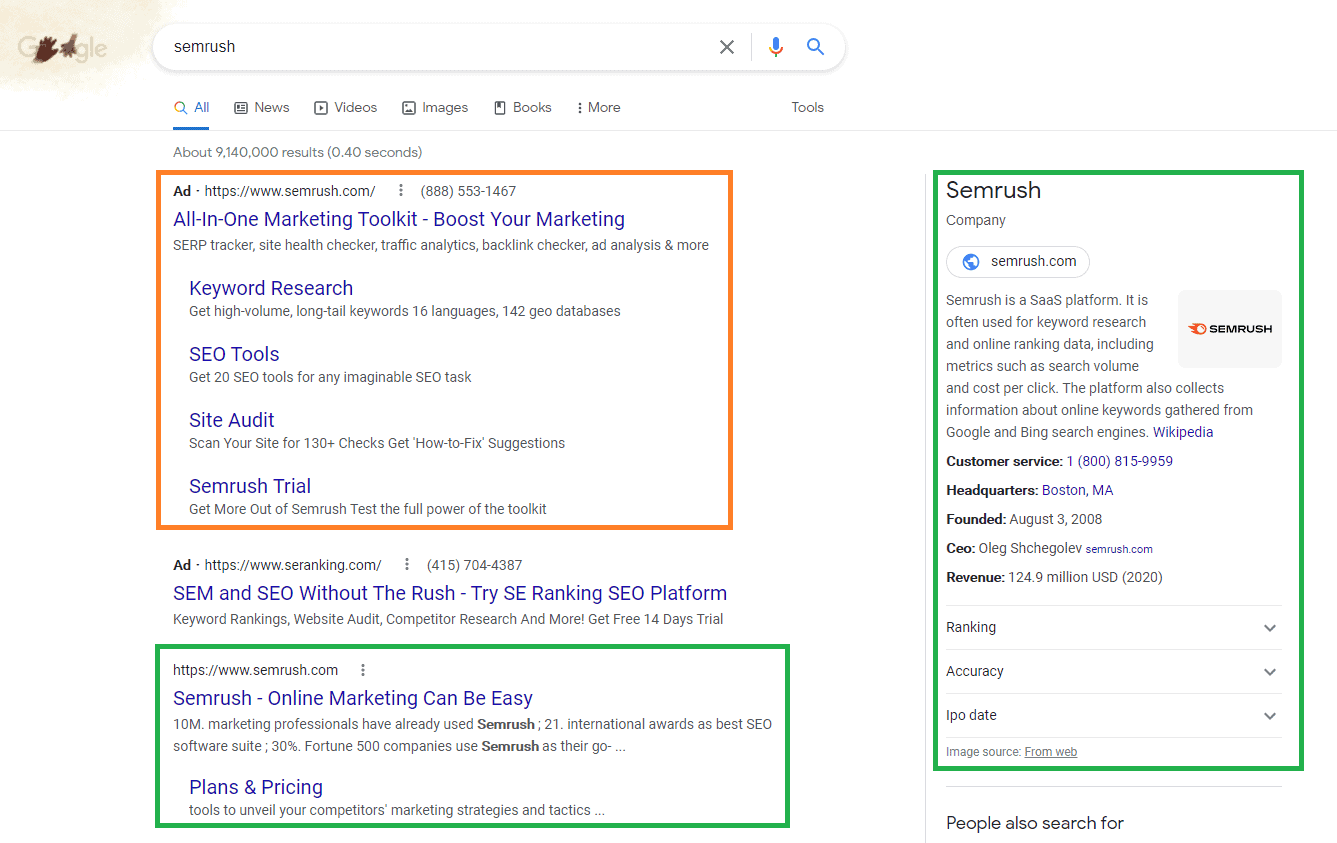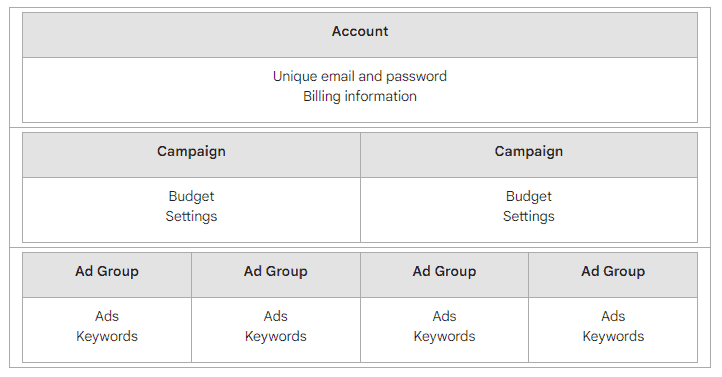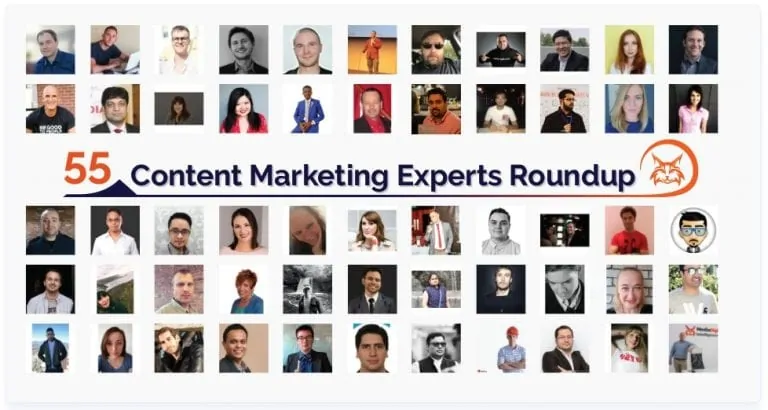If you’ve ever wondered, “what is SEM?” you are not alone. There are a lot of terms in digital marketing that sound the same or have similar definitions. In this post, we aim to clear up the confusion.
We’ll dive deep into the meaning of search engine marketing (SEM) and the best practices you should follow to execute successful paid search marketing strategies.
What Is SEM?
SEM, or search engine marketing, is the act of using paid strategies to increase search visibility. In the past, the digital marketing industry used search engine marketing to describe both search engine optimization (SEO) and paid search. But now, it almost always refers only to paid search marketing.
SEM, or search engine marketing, is the act of using paid strategies to increase search visibility. Brands pay for ads to appear as search results on search engine results pages.
With SEM, brands pay for ads to appear as search results on search engine results pages (SERPs). They target select keywords so that when users search for those terms, they see an ad from the brand. The brand is charged only if a user clicks on the ad.
You can find paid search ads on almost any search results page. You can locate these paid placements at the top and bottom of the page. They include an “Ad” designation to inform users that it is a paid placement.
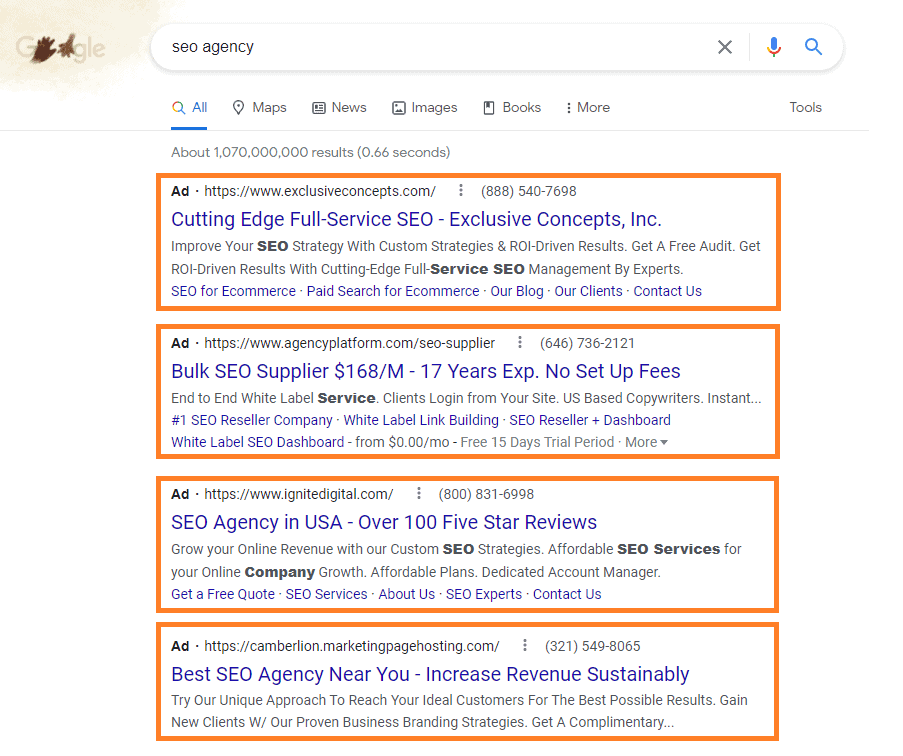
Some paid search ads may also appear as products in a featured carousel.
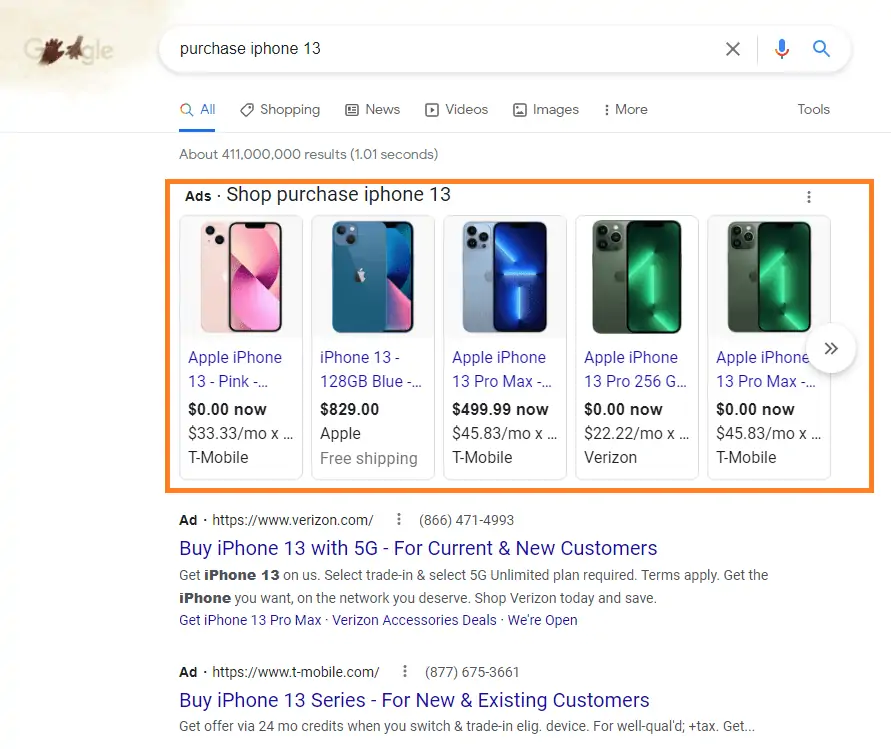
Search Marketing, SEO, and SEM: What’s the Difference?
To fully answer the question, “what is SEM?” it helps to know how SEM differs from other search marketing terms.
Search Marketing
Search marketing is an umbrella term that refers to any tactic used to increase a brand’s search visibility or get a brand to appear more frequently in search. It may include a paid SEM, organic SEO, or both.
Search Engine Optimization (SEO)
Search engine optimization, or SEO, uses tactics that improve organic visibility in search. Unlike SEM tactics that pay for placement on SERPs, best practices for SEO aim to attract search engines and earn prominent organic search placements. Organic search results don’t have an “Ad” designation on their results. They are not paid for; they are earned.
Pay-Per-Click (PPC) Marketing
While trying to answer the question, “what is SEM?” another term you will encounter is pay-per-click marketing or PPC.
PPC is a paid marketing strategy where a brand creates a digital ad and is charged each time a user clicks on it. When PPC ads are shown in search results, this is considered SEM. But PPC isn’t always related to SEM.
When PPC strategies are used on channels other than search, this is not considered SEM. For example, you can use PPC on sites that support digital ads like Promoted Tweets or Facebook Ads. PPC also includes Google display ads, where brands are charged when a user clicks on a banner ad on a website.
So while PPC is an SEM tactic, it can also refer to a social or display ad marketing.
SEM Fundamentals: Terminology, Platforms, and Tactics
So far, we’ve covered:
- What is SEM?
- What is the difference between search marketing, SEO, SEM, and pay-per-click marketing?
Next, we’ll review SEM fundamentals like the terminology, platforms, and tactics related to paid search engine marketing.
Want to learn more about the difference between SEM and SEO? Read: SEM vs. SEO: What’s the Difference and Which is Right for My Brand?
SEM Platforms
An SEM platform is a search engine where a brand can place search ads that are displayed when users perform a search. The most common SEM platforms are Google and Bing.
- Google Ads is the most widely used SEM platform. Billions of Google searches are performed a day, so it can help you get in front of the largest online audience.
- Bing Ads claims to connect with 3 million searchers that Google can’t reach. By serving ads on partner sites such as Yahoo and MSN, Bing Ads helps you connect with searchers who aren’t exclusively using Google for search.
Types of SEM Keywords
SEM keywords are the terms and phrases you target in your search engine marketing campaigns. When users search for those keywords, they see your ads. For example, if your campaign targets the term “virtual assistant,” your ad may show when a user searches for that phrase.
When you set up an SEM campaign, choose the keywords you want to target and/or avoid. You can use four types of keywords in your SEM campaigns: broad match, phrase math, exact match, and negative keywords.
Broad match keywords
Broad match keywords target variations of a term. This includes similar phrases, singular or plural forms, misspellings, stemming, or synonyms of the target term.
For example, when targeting the broad match keyword virtual assistant, a campaign may also target virtual assistants, online assistants, and virtual teams.
Phrase match keywords
Phrase match keywords target the exact phrase, plus any phrases that have words that come before or after the target keyword.
For example, when targeting the phrase match keyword virtual assistant, a campaign may target the best virtual assistant, find a virtual assistant, and hire a virtual assistant.
Exact match keywords
Exact match keywords target words that are very closely related to the target term. This includes misspellings, singular or plural forms, stemming, abbreviations, reordered words, paraphrases, or closely related words with the same search intent of the exact match term.
For example, when targeting the exact match keyword virtual assistant, a campaign may also target virtual assistants, virtual assistance, and virtuals assistant.
Negative keywords
The negative keywords exclude terms that you don’t want to target. Negative keywords are variations of broad match, phrase match, and exact match keywords that you don’t want to use in your campaign. These terms may be semantically related to your keywords but unrelated to the search intent of the target term, your campaign, or ad copy. Examples of negative keywords for the target term virtual assistant may include virtual assistant salary or virtual assistant training. If the ad were trying to target companies looking to hire a virtual assistant, the intent for those terms wouldn’t be relevant; therefore, they should be excluded from the campaign.
Examples
| Type of Keyword | Description | Example |
|---|---|---|
| Broad match | Targets variations of a term. This includes similar phrases, singular or plural forms, misspellings, stemmings, or synonyms of the target term. | For the target keyword virtual assistant, a campaign may also target virtual assistants, online assistant, and virtual team. |
| Phrase match | Targets the exact phrase, plus any phrases with words that come before or after the target keyword. | For the target keyword virtual assistant, a campaign may target the best virtual assistant, find a virtual assistant, and hire a virtual assistant. |
| Exact match | Targets words that are very closely related to the target term. This includes misspellings, singular or plural forms, stemmings, abbreviations, reordered words, paraphrases, or closely related words with the same search intent of the exact match term. | For the target keyword virtual assistant, a campaign may also target virtual assistants, virtual assistance, and virtuals assistant. |
| Negative | Excludes terms that you don’t want to target. Negative keywords are variations of broad match, phrase match, and exact match keywords that you don’t want to use in your campaign. These terms may be semantically related to your keywords but unrelated to the search intent of the target term, your campaign, or ad copy. | For the target keyword virtual assistant may include virtual assistant salary or virtual assistant training. |
SEM Targeting
Targeting keywords tells a search platform when to show your ads. SEM targeting takes it one step further. Through targeting, you set additional parameters for when your ad should show and who it should show to.
- Location targeting sets ads to only show to people within a specific ZIP code or geographic area.
- Ad schedule targeting sets ads to only show at certain times or during specific days of the week.
- Demographic targeting sets ads to only show to people who fit specific demographic categories based on age and gender.
- Device targeting sets ads to only show to users on specific devices such as mobile phones, desktops, or tablets.
SEM Account Structure
Account structure is the way your SEM campaigns are organized and set up. It groups relevant themes and keywords to create campaigns within your account. This Google chart shows the hierarchy of how the account structure works.
- Campaigns: As the highest level within an account, each campaign has its own unique goal, budget, bid strategy, and targeting settings. Campaigns often organize accounts into larger themes related to specific products, services, target audience types, or promotions. For example, a platform that matches virtual assistants with clients might have two campaigns, one to target people looking for virtual assistants and one to target people who are virtual assistants.
- Ad Groups: Within a campaign, ad groups break the campaign into even more specific themes. Most campaigns have a few different ad groups, and it is recommended not to exceed seven to 10 ad groups per campaign. For example, the campaign targeting virtual assistants might have two ad groups: one targeting part-time virtual assistants and one targeting full-time virtual assistants.
- Keywords and Ads: Each ad group has its target keywords and ads. The keywords and ad copy target the ad group’s unique audience and theme. It is recommended to have two to three ads and no more than 20 keywords per ad group. For example, the ad group targeting full-time virtual assistants might create ads and use keywords that speak directly to virtual assistants looking for full-time work. In contrast, the ad group for part-time virtual assistants would target keywords and use language about part-time work.
SEM Ad Copy
For the most part, SEM ad copy mimics organic search results. But they also have options for showing additional information. A standard ad usually includes two headlines, a description, and a website URL. You can also add:
- Sitelink extensions
- Callout extensions
- Call extensions
- Message extensions
- Location extensions
- Advertiser ratings
- Price extensions
- Structured snippet extensions
SEM platforms may also offer additional search ad formats such as product carousels.
The SEM Ad Auction
Setting up an SEM campaign doesn’t mean your ad will show every time someone searches for your target keyword. SEM platforms have a built-in system that decides if and when your ad shows and how it competes with other brands targeting the same keywords. This system is called an Ad Auction, and it is based on three factors.
- MAX CPC Bid – the maximum amount you are willing to pay when someone clicks on your ad.
- Quality Score – a rating that the platform assigns to your ad. There is no precise formula for Quality Score. Still, it is believed to be based on factors such as your click-through rate (CTR), the relevance of keywords to the ad group, the relevance of the landing page to keywords, and historical ad performance.
- Ad Rank – a rating the platform gives your ad to determine where it will show on SERPs. The higher your Ad Rank, the better placement your search ad will have.
These three factors determine who “wins” the Ad Auction and gets the best placement on search engine results pages.
Max CPC Bid x Quality Score = Ad Rank
The main takeaway from this formula is that brands with a high-Quality Score can outperform brands with a higher max CPC bid. In SEM, if your Quality Score is high, you can get a better position on SERPS while spending less.
How to Improve SEM Results: Keys to Creating Powerful Campaigns
Creating effective SEM campaigns requires research and strategy before you set up your campaign and after your campaign is already running.
The following tactics can help you optimize your campaigns to reach more people, maximize your budget, and drive more conversions.
Perform Keyword Research
One of the biggest keys to SEM success is choosing the best keywords to target. Conduct keyword research and find terms that:
- Are used by your target audience. Sort results by keyword popularity to identify the top phrases that your audience regularly searches for. Use a tool like Semrush, Ahrefs, or Mangools to find the most popular phrases related to your business and industry.
- Work at the end of your sales funnel. Identify high-converting buying keywords targeting prospects near the purchase funnel’s bottom. Use the buyer keywords filter on Semrush to identify search terms with high purchase intent that drive traffic to your competitors but not to you.
- Fit within your budget. Consider the ROI you expect to receive from your campaigns and choose keywords with a cost-per-click that will lead to a positive ROI.
Create Compelling Ads
For an SEM campaign to be effective, it needs to compel searchers to click on the ad. Use the following tips to get more users to click on your search results while creating your ads.
- Use the keyword in the ad copy.
- Communicate to the reader the benefit or solution you’re offering.
- Connect your copy to searcher intent.
- Include prices and promotions when relevant.
- Include a clear call to action.
- Utilize ad extensions.
Improve Your Quality Score
A high-Quality Score helps your SEM ads show more often and at a lower cost. Work to improve your Quality Score by incorporating target keywords in your ad copy and the landing page it leads to. This lets SEM platforms know that the ad and destination URL align with the searcher’s intent, which leads to a higher Quality Score.
Optimize Existing Campaigns
To get the most out of your SEM strategy, you must also learn how to improve SEM campaigns once they are launched.
To get the best results, continue to optimize campaigns once they start running.
- Add additional relevant keywords. You may have missed keywords when you initially created your campaign. Review the campaigns and add any suggested keywords that might be missing.
- Set negative keywords. Review your campaign and remove keywords attracting the wrong traffic type. Set low-performing or irrelevant terms as negative keywords.
- Utilize A/B testing. One benefit of SEM is that you can get faster feedback about what works. Use A/B testing to create different variations of your ad strategies. Review what works and tweak your campaigns to find the highest-performing combination of targeting, ad copy, keywords, and landing pages.
Start Crafting Your SEM Strategy
Now that you can confidently answer, “what is SEM?” begin planning and executing your SEM plan. Start by using the tools mentioned in this post to find the best keywords for your campaigns.
Source: Alexa blog

![What Is SEM? [Paid Search Guide]](https://competico.com/wp-content/uploads/2022/07/What-Is-SEM.png)
